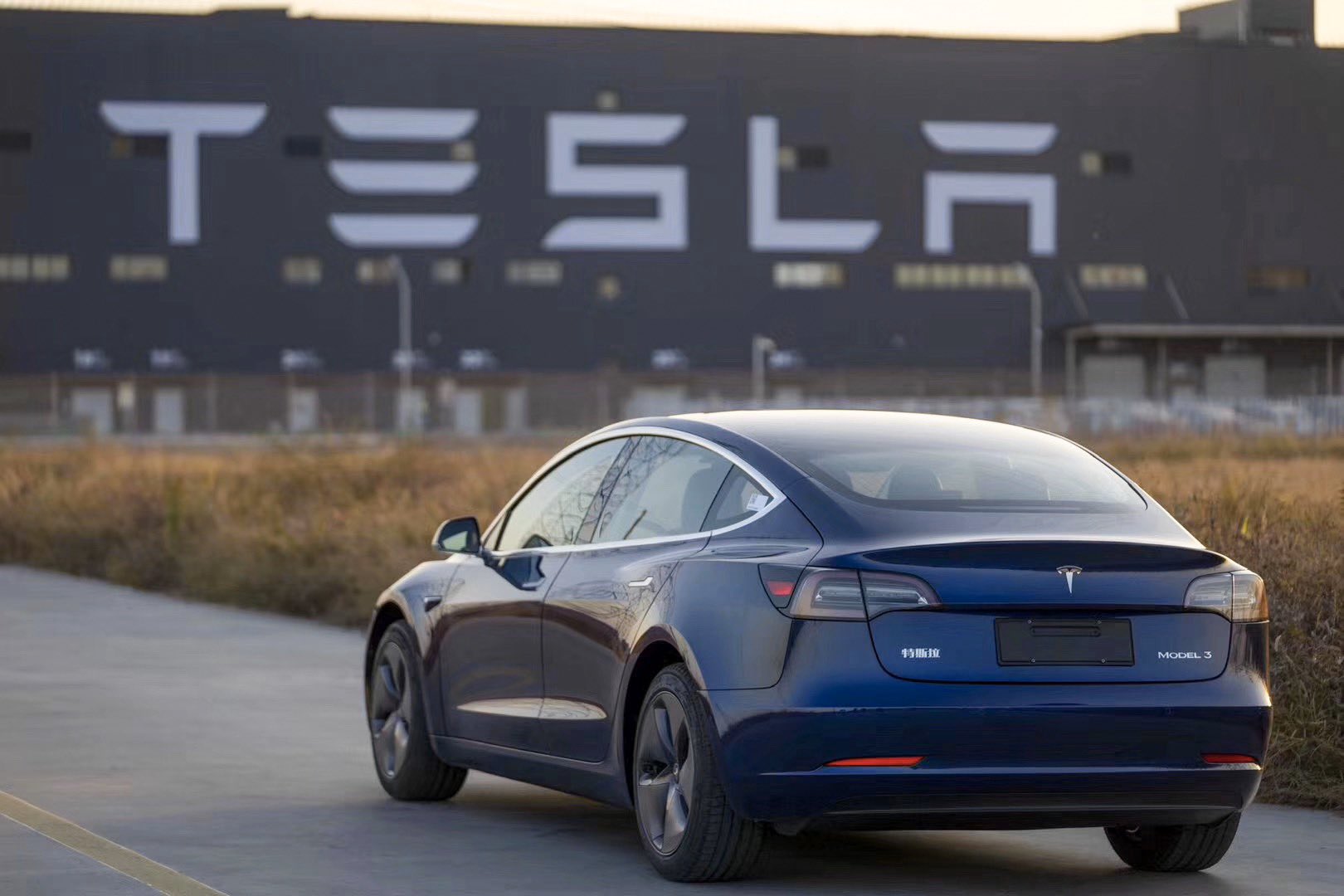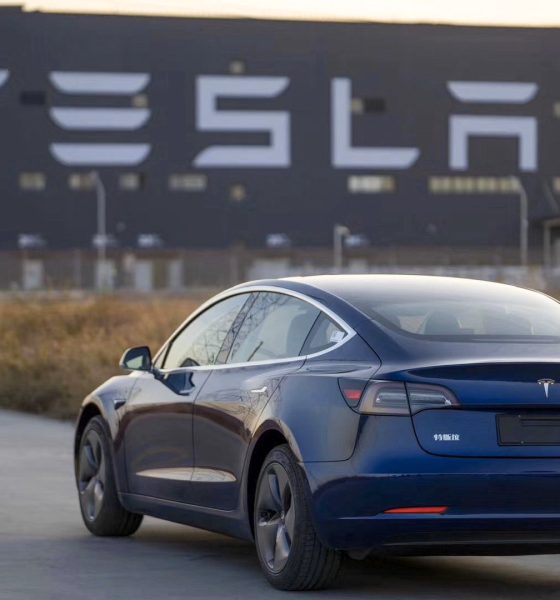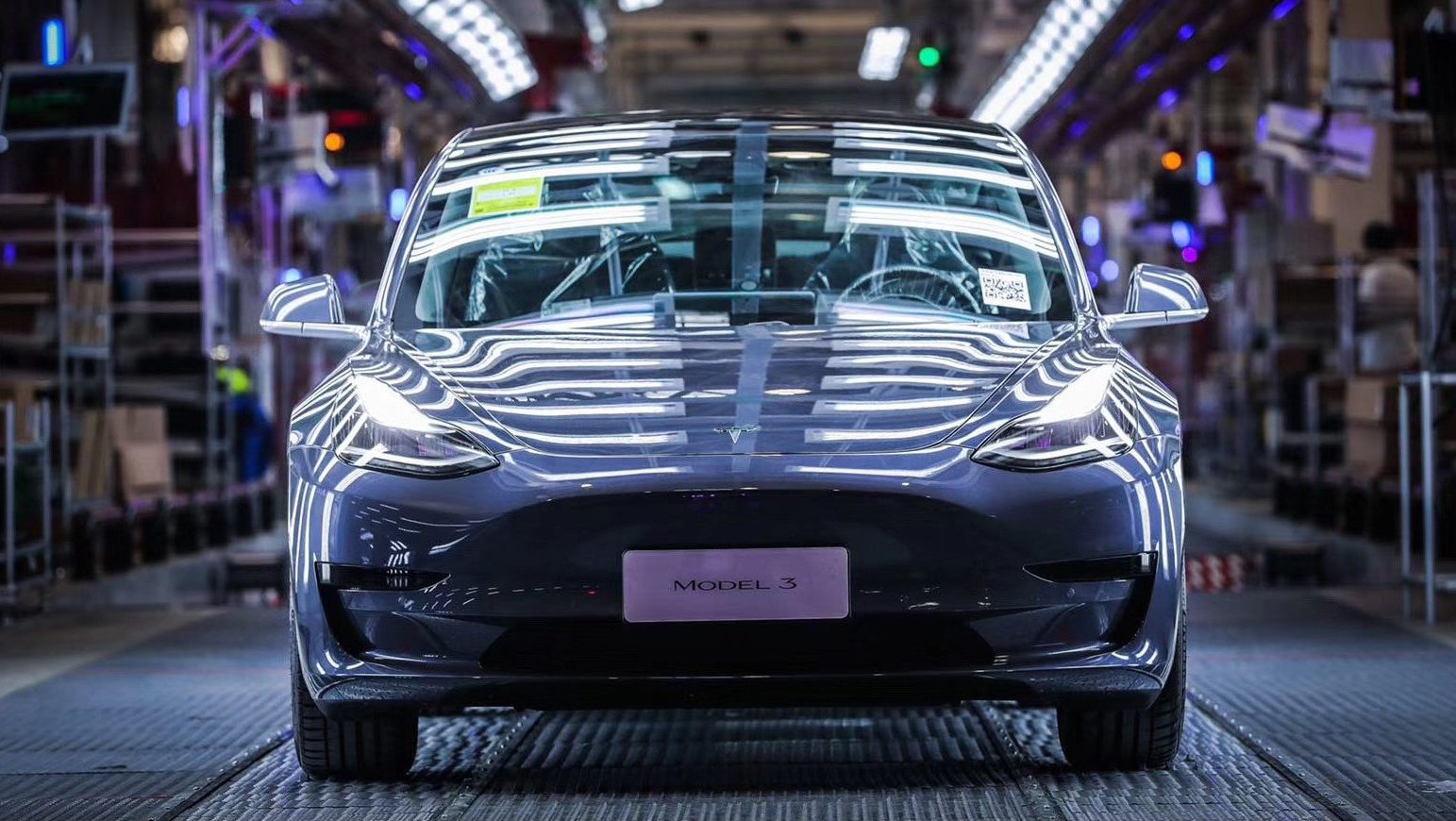

Investor's Corner
Tesla’s CATL partnership in China is a strategic play that sets the stage for market domination
Tesla’s deal with battery supplier Contemporary Amperex Technology Co Ltd (CATL) for its Made-in-China Model 3 is a strategic move that will deepen the company’s roots in the world’s largest automotive market.
CATL is expected to supply a “zero cobalt” prismatic lithium iron phosphate (LFP) batteries that the carmaker would use in its Model 3 sedan for the domestic market.
Reduce Battery Costs While Doing Good
The LFP batteries are expected to be cheaper by a “double-digit percent” compared to the existing batteries Tesla is using for its locally-produced Model 3. Benchmark Mineral Intelligence, a price reporting agency that specializes in lithium-ion batteries for EVs, estimates that Tesla will save more than 25% in cost compared to what the carmaker spends for batteries used for Model 3s in the United States.
Tesla uses cylindrical nickel-cobalt-aluminum (NCA) batteries for its vehicles which typically have lower cobalt content than industry-popular nickel-cobalt-aluminum (NCM) batteries used by other electric vehicle manufacturers. However, as the world begins to better understand the human toll for cobalt mining, Tesla CEO Elon Musk has expressed his intentions to cut cobalt-use in Tesla batteries. Thereby paving the way for a partnership with a battery cell manufacturer that has a zero to limited-need for cobalt – CATL.
We use less than 3% cobalt in our batteries & will use none in next gen
— Elon Musk (@elonmusk) June 13, 2018
CATL will use its cell-to-pack (CTP) technology to improve the energy density and safety of the zero-cobalt batteries. Using the technology that involves more than 70 core patents, CATL can up the mass-energy density of the LFP batteries by 10 to 15 percent, reduce the number of parts of battery packs by around 40 percent, and improve volume utilization efficiency by 15 to 20 percent. The battery manufacturer also claims that it is taking steps to increase the energy density of its LPF batteries using CTP technology by 2024.
All of these factors make the equation a win-win for Tesla. Aside from the cost savings, the zero-cobalt batteries for the China Model 3 may also help improve the production process and help Giga Shanghai hit a 3,000 units per week run rate, consistently. Plus, Tesla’s partnership with a Chinese supplier can only help further improve its relationship with the government that has welcomed it with open arms.
Small Step To Reduce Cost, Big Step To Conquer China
Tesla’s Giga Shanghai has so far been impressive. The first vehicle production plant for Tesla outside of the US is practically a miracle by all standards. The facility was built from the ground up and it churned out its first locally-made Model 3s after 10 months.
It also makes sense to set up a car factory in the biggest automotive market in the world that brought roughly $3 billion in revenues to Tesla’s coffers in 2019 and positioned Tesla to conquer China.
“I feel there is a pretty big fundamental efficiency gain that Tesla has by just making cars, especially affordable cars than 3 and Y, at least on the continent where the customers are. what we’re doing — or have been doing in the past was really pretty silly in making cars in California and then shipping them halfway around the world…,” Musk said during the Q4 2019 earnings call.

With the CATL zero-cobalt batteries for MIC Model 3s, Tesla further localizes its supply chain in China. With localization, analysts believe that the China-made Model 3 can practically be a cash cow for Tesla.
A partnership with CATL can also put Tesla on a path to achieving higher profit margins for the China Model 3 while still being able to lower the price of its vehicles, thereby stimulating local demand even more.
According to Tesla CFO Zachary Kirkhorn, the margins coming out of Giga Shanghai is expected to match that of vehicles coming out of Fremont. “And so if you add all of this up, our internal estimates are a pretty significant reduction in the cost of Model 3 in China relative to Fremont, but I think it’s also important to keep in mind that the cost of the Standard Plus that we’re selling out of Shanghai is also lower than that of the similar car coming out of Fremont from price perspective. And so and I’ve said this on previous earnings calls, I think it’s fair to expect the margin coming out of the Shanghai facility to match the same margin for the vehicle in Fremont,” noted Kirkhorn in Tesla’s Q4 earnings call.
With Tesla’s MIC Model 3 as an electric car for the masses, Elon Musk and his car brand can help change China. The government sees Tesla as a catalyst for its slumping automotive industry and a spark to help transition the wider population from internal combustion engines to electric vehicles, which in turn can help combat air pollution that causes over 1 million deaths per year in the country and costing its economy roughly $40 billion annually.
The zero-cobalt batteries by the CATL for the China Tesla Model 3 might be one of the essential ingredients to further help TSLA skyrocket and drive the brand to consistent profitability.

Investor's Corner
Tesla Q4 delivery numbers are better than they initially look: analyst
The Deepwater Asset Management Managing Partner shared his thoughts in a post on his website.

Longtime Tesla analyst and Deepwater Asset Management Managing Partner Gene Munster has shared his insights on Tesla’s Q4 2025 deliveries. As per the analyst, Tesla’s numbers are actually better than they first appear.
Munster shared his thoughts in a post on his website.
Normalized December Deliveries
Munster noted that Tesla delivered 418k vehicles in the fourth quarter of 2025, slightly below Street expectations of 420k but above the whisper number of 415k. Tesla’s reported 16% year-over-year decline, compared to +7% in September, is largely distorted by the timing of the tax credit expiration, which pulled forward demand.
“Taking a step back, we believe September deliveries pulled forward approximately 55k units that would have otherwise occurred in December or March. For simplicity, we assume the entire pull-forward impacted the December quarter. Under this assumption, September growth would have been down ~5% absent the 55k pull-forward, a Deepwater estimate tied to the credit’s expiration.
“For December deliveries to have declined ~5% year over year would imply total deliveries of roughly 470k. Subtracting the 55k units pulled into September results in an implied December delivery figure of approximately 415k. The reported 418k suggests that, when normalizing for the tax credit timing, quarter-over-quarter growth has been consistently down ~5%. Importantly, this ~5% decline represents an improvement from the ~13% declines seen in both the March and June 2025 quarters.“
Tesla’s United States market share
Munster also estimated that Q4 as a whole might very well show a notable improvement in Tesla’s market share in the United States.
“Over the past couple of years, based on data from Cox Automotive, Tesla has been losing U.S. EV market share, declining to just under 50%. Based on data for October and November, Cox estimates that total U.S. EV sales were down approximately 35%, compared to Tesla’s just reported down 16% for the full quarter. For the first two months of the quarter, Cox reported Tesla market share of roughly a 65% share, up from under 50% in the September quarter.
“While this data excludes December, the quarter as a whole is likely to show a material improvement in Tesla’s U.S. EV market share.“
Elon Musk
Tesla analyst breaks down delivery report: ‘A step in the right direction’
“This will be viewed as better than feared deliveries and a step in the right direction for the Tesla story heading into 2026,” Ives wrote.

Tesla analyst Dan Ives of Wedbush released a new note on Friday morning just after the company released production and delivery figures for Q4 and the full year of 2025, stating that the numbers, while slightly underwhelming, are “better than feared” and as “a step in the right direction.”
Tesla reported production of 434,358 and deliveries of 418,227 for the fourth quarter, while 1,654,667 vehicles were produced and 1,636,129 cars were delivered for the full year.
Tesla releases Q4 and FY 2025 vehicle delivery and production report
Interestingly, the company posted its own consensus figures that were compiled from various firms on its website a few days ago, where expectations were set at 1,640,752 cars for the year. Tesla fell about 4,000 units short of that. One of the areas where Tesla excelled was energy deployments, which totaled 46.7 GWh for the year.
🚨 Wedbush’s Dan Ives has released a new note on Tesla $TSLA:
“Tesla announced its FY4Q25 delivery numbers this morning coming in at 418.2k vehicles slightly below the company’s consensus delivery estimate of 422.9k but much better than the whisper numbers of ~410k as the…
— TESLARATI (@Teslarati) January 2, 2026
In terms of vehicle deliveries, Ives writes that Tesla certainly has some things to work through if it wants to return to growth in that aspect, especially with the loss of the $7,500 tax credit in the U.S. and “continuous headwinds” for the company in Europe.
However, Ives also believes that, given the delivery numbers, which were on par with expectations, Tesla is positioned well for a strong 2026, especially with its AI focus, Robotaxi and Cybercab development, and energy:
“This will be viewed as better than feared deliveries and a step in the right direction for the Tesla story heading into 2026. We look forward to hearing more at the company’s 4Q25 call on January 28th. AI Valuation – The Focus Throughout 2026. We believe Tesla could reach a $2 trillion market cap over the coming year and, in a bull case scenario, $3 trillion by the end of 2026…as full-scale volume production begins with the autonomous and robotics roadmap…The company has started to test the all-important Cybercab in Austin over the past few weeks, which is an incremental step towards launching in 2026 with important volume production of Cybercabs starting in April/May, which remains the golden goose in unlocking TSLA’s AI valuation.”
It’s no secret that for the past several years, Tesla’s vehicle delivery numbers have been the main focus of investors and analysts have looked at them as an indicator of company health to a certain extent. The problem with that narrative in 2025 and 2026 is that Tesla is now focusing more on the deployment of Full Self-Driving, its Optimus project, AI development, and Cybercab.
While vehicle deliveries still hold importance, it is more crucial to note that Tesla’s overall environment as a business relies on much more than just how many cars are purchased. That metric, to a certain extent, is fading in importance in the grand scheme of things, but it will never totally disappear.
Ives and Wedbush maintained their $600 price target and an ‘Outperform’ rating on the stock.
Investor's Corner
Tesla releases Q4 and FY 2025 vehicle delivery and production report
Deliveries stood at 406,585 Model 3/Y and 11,642 other models, for a total of 418,227 vehicles.

Tesla (NASDAQ:TSLA) has reported its Q4 2025 production and deliveries, with 418,227 vehicles delivered and 434,358 produced worldwide. Energy storage deployments hit a quarterly record at 14.2 GWh.
Tesla’s Q4 and FY 2025 results were posted on Friday, January 2, 2026.
Q4 2025 production and deliveries
In Q4 2025, Tesla produced 422,652 Model 3/Y units and 11,706 other models, which are comprised of the Model S, Model X, and the Cybertruck, for a total of 434,358 vehicles. Deliveries stood at 406,585 Model 3/Y and 11,642 other models, for a total of 418,227 vehicles.
Energy deployments reached 14.2 GWh, a new record. Similar to other reports, Tesla posted a company thanked customers, employees, suppliers, shareholders, and supporters for its fourth quarter results.
In comparison, analysts included in Tesla’s company-compiled consensus estimate that Tesla would deliver 422,850 vehicles and deploy 13.4 GWh of battery storage systems in Q4 2025.
Tesla’s Full Year 2025 results
For the full year, Tesla produced a total of 1,654,667 vehicles, comprised of 1,600,767 Model Y/3 and 53,900 other models. Tesla also delivered 1,636,129 vehicles in FY 2025, comprised of 1,585,279 Model Y/3 and 50,850 other models. Energy deployments totaled 46.7 GWh over the year.
In comparison, analysts included in Tesla’s company-compiled consensus expected the company to deliver a total of 1,640,752 vehicles for full year 2025. Analysts also expected Tesla’s energy division to deploy a total of 45.9 GWh during the year.
Tesla will post its financial results for the fourth quarter of 2025 after market close on Wednesday, January 28, 2026. The company’s Q4 and FY 2025 earnings call is expected to be held on the same day at 4:30 p.m. Central Time.








